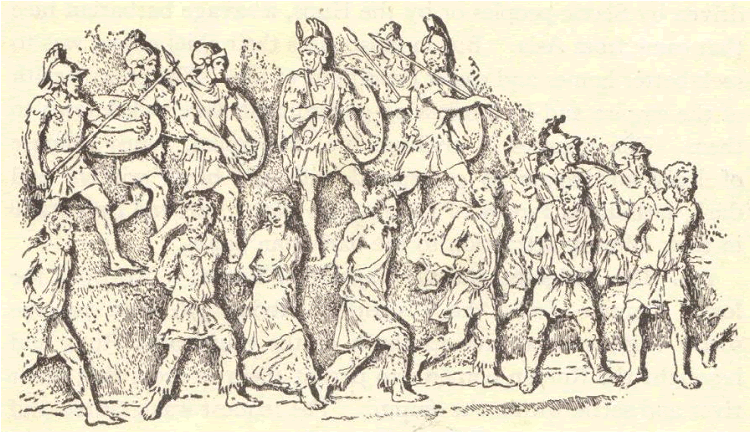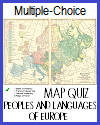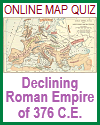| Ancient Barbarian Goths |
|---|
| www.studenthandouts.com ↣ World History ↣ Ancient Rome ↣ Ancient Rome Maps & Pictures |
 |
|
Ancient Captive Barbarian Goths: From sculptures on a column erected in Constantinople about 400 C.E. The ancient barbarian Goths were tall and athletic, with fair complexions, blue eyes, and yellow hair, more like the Scandinavians than any other modern people. The men wore long beards. Their dress consisted of a short tunic with girdle, wide turned-down collar, and short sleeves; an inner garment to the knees; and trousers sometimes reaching to the ankle. These garments were often referred to as distinguishing the Goths from the bare-legged Romans. Click here to enlarge.
The Goths were a Germanic people who played a significant role in the decline of the Western Roman Empire during the 3rd to 5th centuries C.E. The origins of the Goths are not entirely clear, and their early history is a subject of some debate among historians. Migration Period: The Goths were part of the larger migration of various Germanic and eastern European tribes during the Migration Period, also known as the Völkerwanderung, which occurred from the late Roman Republic through the early Byzantine Empire (circa 375 to 568 C.E). Early Origins: The Goths are believed to have originated in the region around the Baltic Sea, in what is now Sweden, and parts of modern-day Poland and Ukraine. They were a Germanic people who spoke a language known as Gothic. Migration South: At some point, likely during the 2nd and 3rd centuries C.E., the Goths began migrating southward, possibly due to pressure from other migrating tribes, climatic changes, or a search for better land and opportunities. Contact with the Roman Empire: The Goths came into contact with the Roman Empire during their southward migration. They first appeared in Roman records as both allies and adversaries, sometimes serving as Roman foederati (allies) in border regions. Gothic Wars: The Goths became more closely associated with the Roman Empire through a series of conflicts, including the Gothic Wars in the 3rd century. During these wars, the Goths came into conflict with the Roman legions, often seeking refuge within the borders of the Roman Empire or even serving as mercenaries in the Roman army. Visigoths and Ostrogoths: Over time, the Goths became divided into two major groups: the Visigoths (Western Goths) and the Ostrogoths (Eastern Goths). The Visigoths, led by Alaric, sacked Rome in 410 C.E., a significant event symbolizing the declining power of the Western Roman Empire. The Ostrogoths, led by Theodoric the Great, later established the Ostrogothic Kingdom in Italy. The Goths' interaction with the Roman Empire had profound consequences for both the Goths and the Romans. The Gothic Wars and subsequent events played a role in the weakening of the Western Roman Empire, contributing to its eventual fall in 476 C.E. The Visigoths and Ostrogoths went on to establish their own kingdoms in the Western Roman Empire's former territories. While the exact origins of the Goths may not be definitively known, their historical impact on the Roman Empire and the subsequent kingdoms they established make them a significant group in the study of late antiquity. |
 |  |  |  |  |  |
| Ancient Rome Books and Films | Ancient Rome Outlines and PowerPoints |
| Ancient Rome Maps and Pictures | Ancient Rome Study Games |
| Ancient Rome Miscellany | Ancient Rome Worksheets |
| www.studenthandouts.com ↣ World History ↣ Ancient Rome ↣ Ancient Rome Maps & Pictures |








